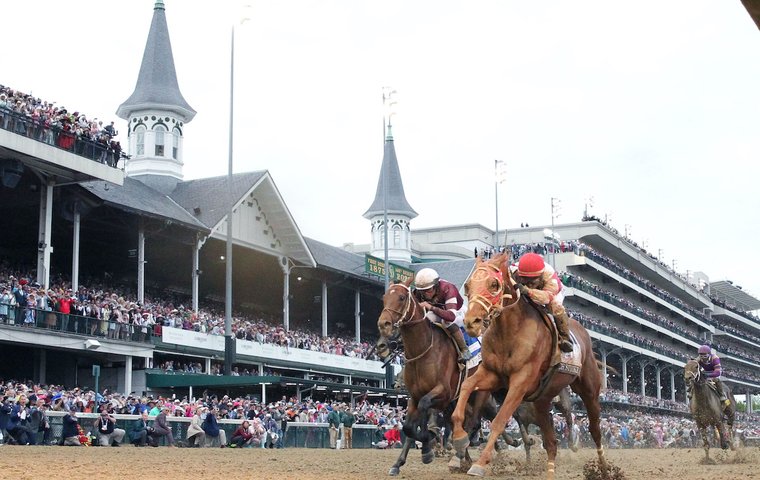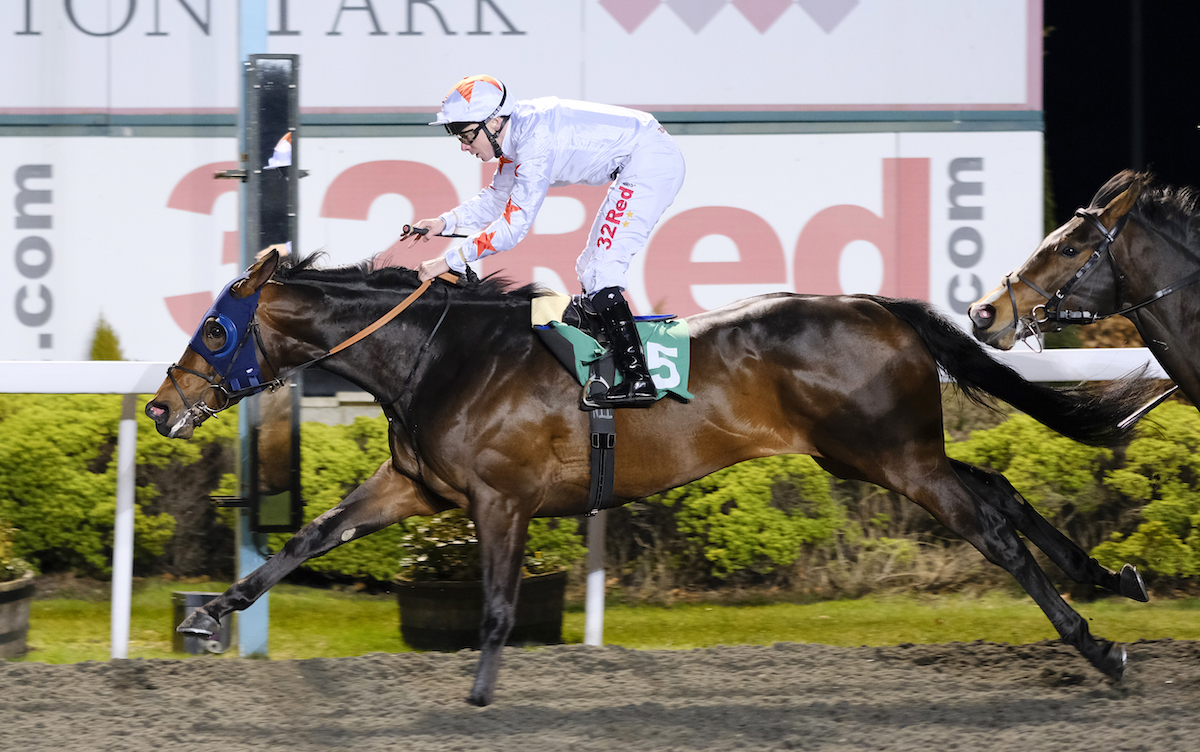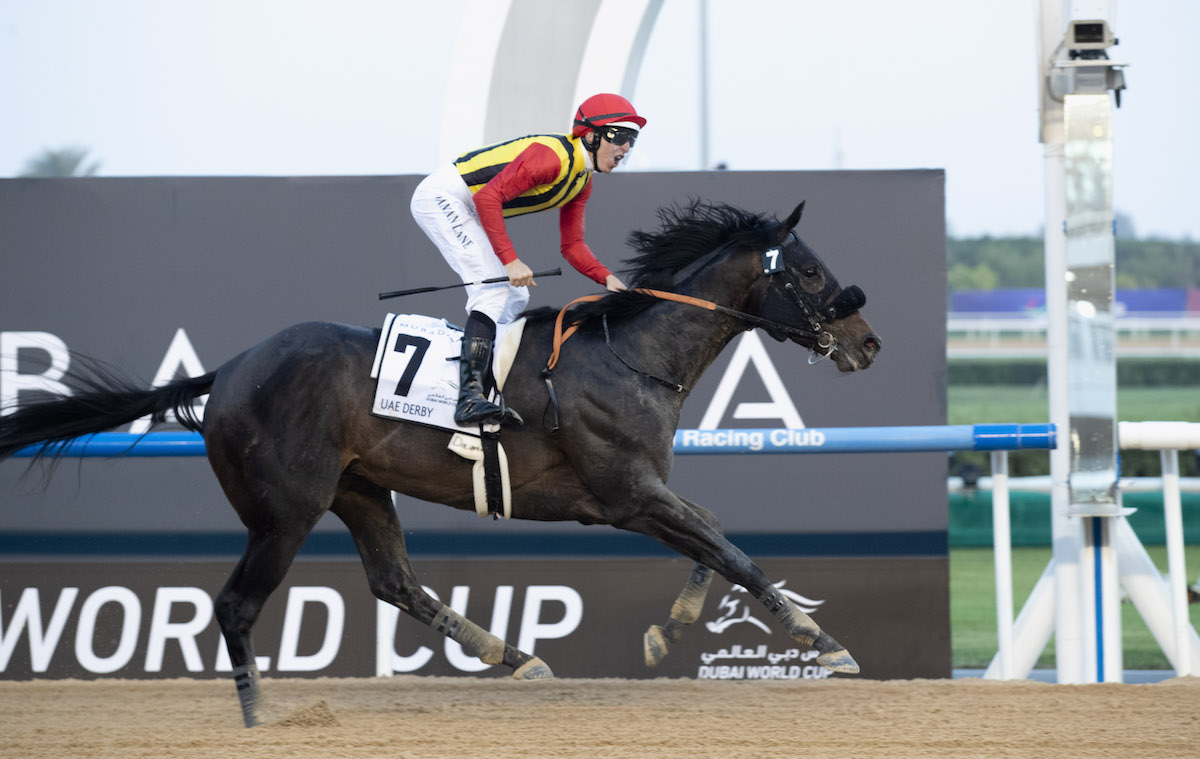
Horses earn places in the 20-runner starting gate on the first Saturday in May at Churchill Downs via a convoluted points system. Steve Dennis suggests a radical shake-up.

Not on every road, though. Not on the Road to the Kentucky Derby, where the journey lasts a rambling, sprawling eight months and the destination is the greatest two minutes in sport.
The Kentucky Derby is not decadent and depraved – that was just ole Hunter S looking into the mirror – but it would greatly benefit from a road slightly less travelled.
The Derby is currently bent under the burden of the interminable, interminably dull Bob Baffert medication violation saga that may or may not be approaching a conclusion.
It has left the futures market on the Derby in the lunatic situation where three of the first six horses in the betting are ineligible to run until they move barns, one of those zany switcheroos to which US racing is prone, where an assistant trainer takes over from an embattled boss at a moment of infraction-related crisis and we’re supposed to believe that everything is cool again. Nothing to see here, folks, especially when you’re told to look the other way.
Finding a short cut
But that’s a diversion from today’s route, a wild-eyed cab driver providing an unwanted mystery tour of suburbia on the way to the airport. Let’s get back on that long and winding Road and see if we can’t find a short cut.
The Road to the Kentucky Derby was carved into the landscape in 2012 as a new way of qualifying for the big event at Churchill Downs on the first Saturday in May. Previously the qualifying process – there are ‘only’ 20 places in the gate – was based on earnings in Graded stakes regardless of their relevance to the Derby.
The new system was designed to prioritise certain races in the build-up to the Derby, races that ascribed points to the winner and placed horses on a sliding scale, with the top 20 points-earners guaranteed a spot at Churchill Downs. The premise is sound – there are no pure sprinters cluttering up the gate anymore, not that you’d know it from the way they ran the first quarter in last year’s Derby – but the application has become unwieldy.
The points system has changed the way horses are campaigned, underpinning the modern tendency to race horses more sparingly. The ‘Road season’ is divided in two, with the major points contests clustered in late March and early April, meaning that a horse can race just once before the Derby and still accrue sufficient points to make the final field, which many rightly deem unsatisfactory.
 Thoroughly irrelevant
Thoroughly irrelevant
There is also a short-form European ‘Road’ and a Japanese ‘Road’, both of which have been thoroughly irrelevant since their implementation and should be cut immediately.
The connection between a two-year-old mile race run on soft turf in Britain and the Kentucky Derby is zero, and should have been perceived as such from the start. Even the weakly contested races on the synthetic tracks at Dundalk and Chelmsford City seem purely a gratuitous nod to inclusivity, an unhealthy urge to hammer the squarest peg into the most circular hole.
Sure, in recent years there have been Derby runners from outside the US, but they – Mubtaahij, Lani, Thunder Snow, Mendelssohn, Crown Pride and Summer Is Tomorrow – earned their place via the UAE Derby at Meydan, which sits incongruously in the US ‘Road’ and plainly has a terrible record of producing potential Derby winners. The horses listed all performed poorly on the big day, although Thunder Snow was memorable, albeit for all the wrong reasons.
The probable next step will be to introduce the Saudi Derby into the Road, and as the UAE Derby is included it will be difficult to justify omitting the Riyadh race. However, given the short-term debilitating effects of long-distance travel on the thoroughbred, the brief interval for recovery is not conducive to a good preparation for Churchill Downs.
 Roadworks are required
Roadworks are required
It’s plain that roadworks are required. Put out the signs that read ‘under construction’, whistle up the chain gang, and let’s have at the asphalt.
The notion of making the first milestone on the Road a race in mid-September is ill-advised. Two-year-old races have their own place and they should not play a part in deciding who can run in a three-year-old race months hence, even the Breeders’ Cup Juvenile (another poor bellwether for the Derby). The Road should begin with considerable fanfare on January 1.
The points races and points system are also overdue for an overhaul. In the same way that turf races are inadequate harbingers for a race on dirt, there’s little to be gained by including races run on a synthetic surface at Golden Gate Fields and Turfway Park, notwithstanding the victory of Animal Kingdom in the Spiral – now called the Jeff Ruby Steaks and worth a crazy 100 Road points – at Turfway in 2011, back in the days when all-weather racing was the future. The future ain’t what it used to be, as the great Yogi Berra said.
Those remarking that Rich Strike earned his place in last year’s Derby through running at Turfway have a point, but one easily trumped by the fact that without Rich Strike the Derby would have been won by the eventual three-year-old champion, surely a more satisfactory outcome.
Dead-end street
This year’s change in the points structure to reward horses running fifth in Road races is also a dead-end street. Why hand out points to horses who can’t even hit the board in a prep? That’s almost as bad as making the most prestigious Road races tantamount to win-and-you’re-in contests for the Derby, with their top-heavy payload of points allowing winners to gatecrash the established rankings at the last minute.
So here’s a new roadmap, to make the journey almost as compelling as the destination:
• A later start and fewer races, to inspire greater competition in the ones that remain
• No races run outside the US, and none run on synthetics
• Only the first three finishers in Road races to accrue qualifying points
• Less disparity between the 20 points on offer to the Holy Bull (say) winner and the 100 points granted to the Arkansas Derby (say) winner – if the Arkansas Derby (and the Florida Derby, Blue Grass etc) was worth 40, it would further encourage trainers and owners to run their horses with a little more frequency.
All roads lead to Churchill Downs in May – they used to lead to Rome, but the Capannelle ain’t what it used to be – but there’s only one Road that really matters. The destination takes care of itself, but the journey needs some assistance.
• View previous articles in the View from the Rail series
Triple Crown nominations rise by 18% to 369 – including 37 from Japan and two fillies
Terry Finley: We’re proud Flightline was first champion to run medication-free – without Lasix
Dubai World Cup favourite Algiers continues rankings rise with emphatic Meydan triumph
Nicholas Godfrey: Pegasus wings are clipped but, y’know, it’s doin’ all right …
Kentucky Derby: who are the early front-runners for America’s most famous race?
View the latest TRC Global Rankings for horses / jockeys / trainers / sires


